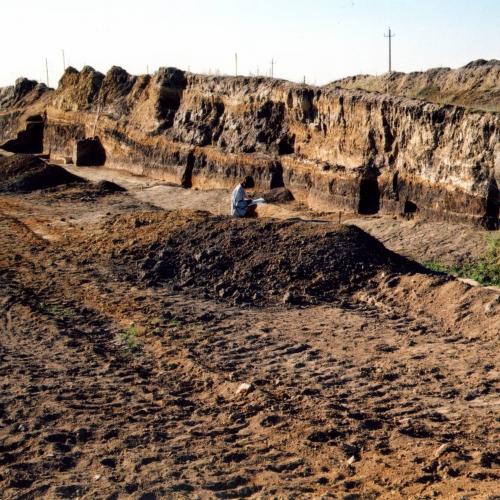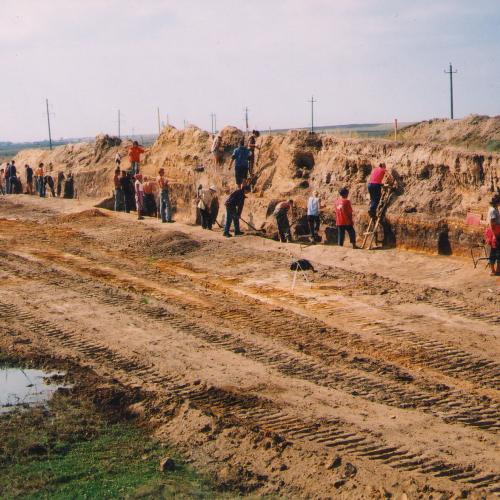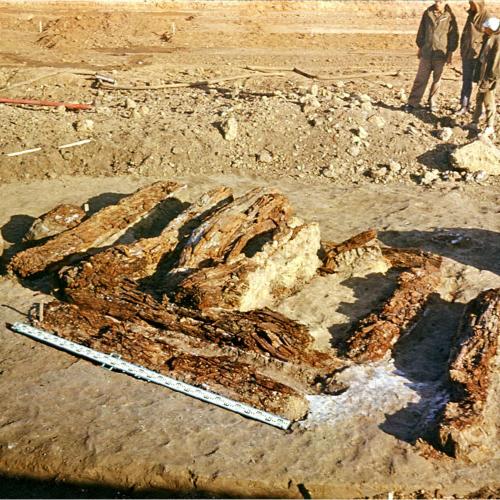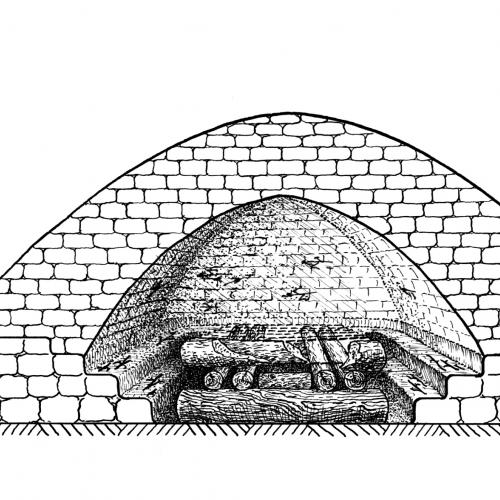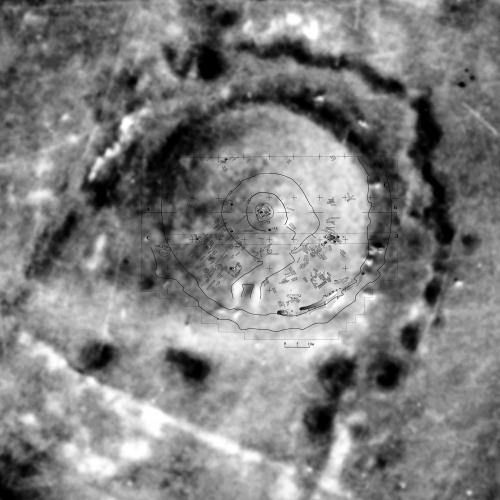Основные раскопки Большого Синташтинского кургана проводились в 1972 и 1976 годах экспедицией под руководством В.Ф. Генинга.
По результатам исследований у специалистов сложилось две основные точки зрения о датировке и характере предназначения данного сооружения. Первая – что сооружение возведено в тоже время, что и поселение Синташта, то есть в XXI-XIX веке до н.э.). Вторая – что это сооружение относится к эпохе поздней бронзы, а основная насыпь возведена в эпоху кочевников.
Погребальное сооружение включает в себя остатки погребальной камеры из бревен, толоса с погребальной платформой и подкурганной подсыпкой. При выборе места захоронения была очерчена площадка, окруженная рвом. Его диаметр составлял примерно 72 метра. Ширина рва отличается: она может достигать от 4-5 до 10-12 метров.
В качестве строительных материалов для возведения конструкций были использованы многочисленные слои спрессованного грунта, травяной растительности и дерева, а также сырцовые кирпичи.
Толос – сводчатое сооружение из вальков ила и глины. Предполагается, что изначально его высота достигала 3,5-4,5 метров, а основание – 18 метров в диаметре. С восточной стороны к сооружению примыкал вход (дромос), разрушенный грабителями.
Погребальная камера была сооружена из бревен и располагалась в центре кургана. Поскольку курган был неоднократно ограблен в древности, в погребальной камере была обнаружена только большая берцовая кость человека. Несколько ребер, обломки черепа и фрагменты разбитых сосудов были найдены над погребальной камерой.
В насыпи кургана в разное время были обнаружены фрагменты сосудов бронзового века, бронзовые рыболовные крючки, бронзовая серьга, медные капли и фрагменты металлургических шлаков.
В.Ф. Генинг, Г.Б. Заднович и В.В. Генинг и Т.С. Малютина предположили, что после частичного разрушения погребального комплекса над ним был сооружен храм-святилище. Археологи предполагают, что храм имел вид ступенчатой пирамиды.
The Big Sintashta Kurgan (BSK)
The Big Sntashta Kurgan was discovered and described in 1967 in the course of a survey along the Sintashta River, conducted by the Ural Archaeological Expedition (Ural State University). The primary excavations of this site were conducted in 1972 and 1976 as part of the same expedition, directed by V.F. Gening. In 2005-2020 additional archeological and natural science research at the site was conducted jointly by the Charitable Foundation “Arkaim”, the “Arkaim” Reserve, and Chelyabinsk State University. This work was directed by G.B. Zdanovich.
Circular platform 72 m in diameter – At the base of the kurgan lies a circular platform 72 m in diameter.
Ditch width of 10-15 m – The kurgan is surrounded by a 10-15 m wide 3 m deep ditch.
Kurgan architecture and burial characteristics
The excavations of the kurgan revealed an architecturally complex structure. At the base of the kurgan there was a circular platform 72 m in diameter, which was surrounded by a 10-15 m wide ditch. In some parts, the ditch was more than 3 m deep. The wall width of the torus-shaped circular platform was 35-39 m. The platform was constructed by removing the top layer of soil. Sod bricks were then systematically piled up on top. The central part of the platform was a circular area 32-34 m in diameter that contained the remnants of a ruined earthwork. The earthwork had a domed tholos-like shape. This structure was constructed using small slabs made of silt-like material (AB I).
The inside of the tholos was 2.5-3 m high. Inside it was a rectangular burial chamber constructed of one row of large wooden logs. After the burial ritual, all components of the burial complex (the inner and outer circular platforms, as well as the tholos) were covered with light-yellow clay-like material (AB I). At this stratigraphic level, in the southern and eastern parts of the kurgan, archaeologists observed traces of fire: baked clay, ash, charcoal, as well as blocks of ashy soil containing Sintashta-type ceramics, metal slag and animal bones. Here archaeologists also observed remnants of rectangular wooden log structures (4 x 5 m) and blocks of pressed clay. This evidence summarizes the Sintashta phase of the BSK construction.
Above the aforementioned stratum, archaeologists observed layers containing clay, wooden, and reed materials (AB III). These layers contained Late Bronze Age ceramics (of Alakul and Fedorovo types). At this time, the BSK functioned as a sanctuary-temple.
It is possible that at this time new burials were interred into the tholos structure and that these burials were subsequently robbed. Human remains and vessel fragments were intermixed. According to the stratigraphic observations and radiocarbon dating, the kurgan begam functioning in the 21st-18th centuries BC and ceased to function in the 16th-13th centuries BC. The functioning of the BSK was tightly linked with the functioning of the Sintashta settlement. Thereby, this ritual site reflects the essence of life of Bronze Age communities occupying this territory.
Before the excavations
Before the excavations the kurgan was a domed earthen mound 85-87 m in diameter and 4.5 m high. The top of the mound was a flattened 40 x 50 m platform. In the very center of the mound there was a circular raised area 2-3 m in diameter. The lower part of the mound, at its base, was quite gentle-sloping while the angle of the mound profile got steeper closer to its top. According to aerial photography, a road stretched from the fortified settlement to the kurgan’s entrance, located in its southern part. Aerial photography also indicated the presence of an ancient circular ditch surrounding the kurgan. At a distance of 20-30 m from the mound, one could see the faint remnants of an additional rectangular-shaped ditch.
